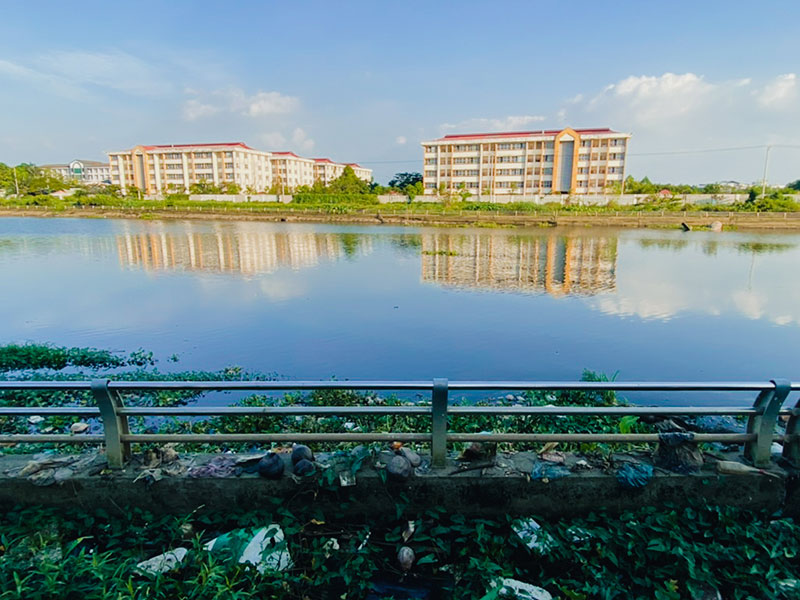Resilient Urban Centres and Surrounds (RUCaS)
University nature-based plan
Can Tho, Viet Nam
Canal and lake that is one source area for flooding onto campus
This case study involves helping the university realise an NbS overlay of its masterplan, developing demonstration sites across the campus, responding to flood risk and helping establish the university as a living lab for NbS.
This case study will also develop practical examples of how NbS can be realised in Viet Nam and articulate the kinds of regulatory reforms needed to implement them.
The Can Tho project is an important opportunity to influence education and curriculum at the university, by engaging departments, academics and student cohorts in designing, managing and monitoring NbS assets.
These activities are key to long-term functionality, and communication for upscaling. Plans for the Can Tho site will include specific responses for marginalised communities or population groups – such as urban poor and peoples living with disability.
Because the site is on a university, it is an opportunity to promote NbS both by building on the wisdom of existing (traditional) knowledge and connection to resources and place, as well as re-visioning how urban development problems can be solved. The project will deliberately focus on intergenerational use and outcomes – considering the strategic and practical needs of young and older citizens, and of different genders.
Can Tho University overall strategy
What does a Water Sensitive City look like?
The CRCWSC has produced research, guidelines and
tools related to the following topics:
Integrated Urban Flood
Management
Climate change
mitigation
Community
engagement
Economics and
business case


